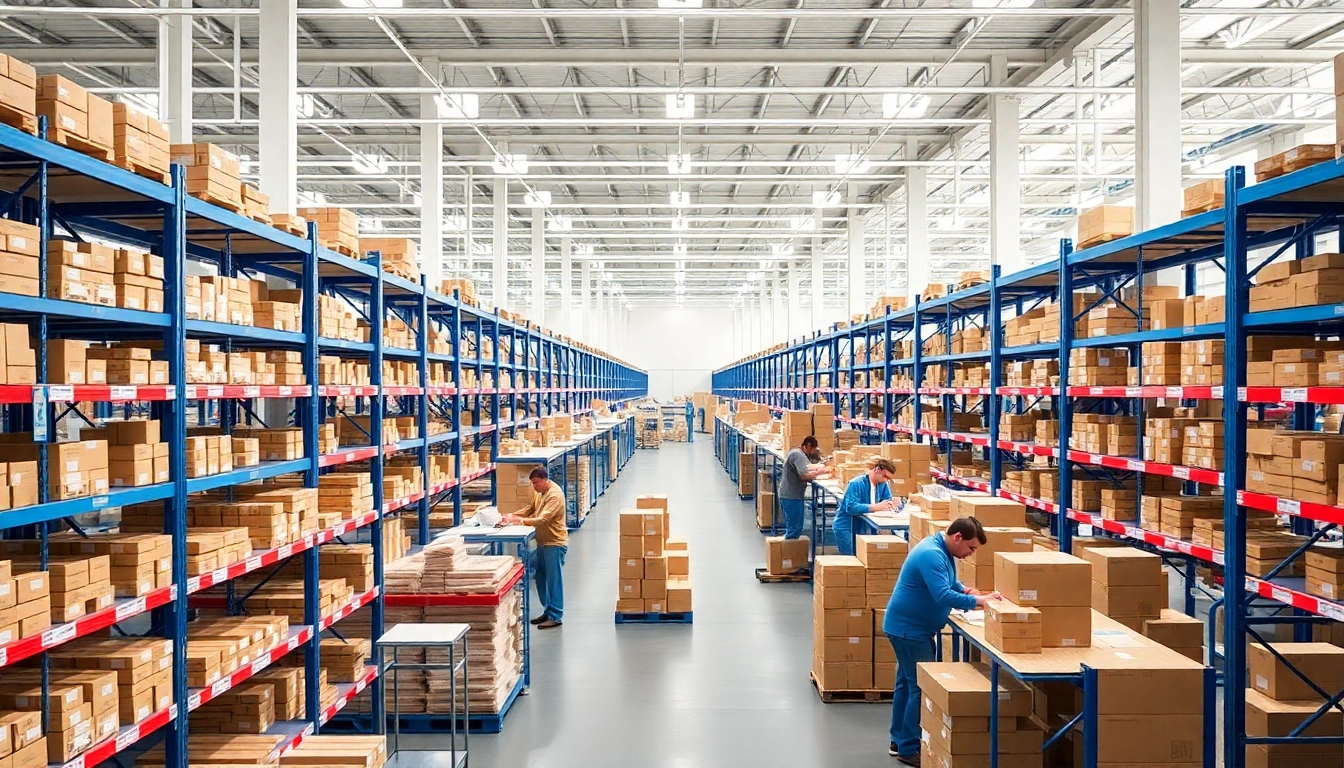What Are 3PL Solutions?
Defining Third-Party Logistics
Third-Party Logistics (3PL) refers to the outsourcing of logistics and supply chain management to an external provider. Businesses leverage these specialized services to streamline operations, focus on their core competencies, and enhance overall efficiency. A 3PL solution typically encompasses a range of services, including transportation, warehousing, inventory management, order fulfillment, and sometimes value-added services like packaging and returns processing.
The Role of 3PL in Supply Chain Management
In today’s fast-paced business environment, effective supply chain management is crucial for ensuring that products reach customers in a timely and cost-effective manner. 3PL providers play a pivotal role in this ecosystem. They act as vital intermediaries, managing the flow of goods from suppliers to customers and helping businesses reduce costs, optimize delivery times, and improve service quality. By outsourcing logistics to a 3PL provider, companies can free up internal resources, minimize capital expenditures, and gain access to advanced logistics technologies.
Benefits of Utilizing 3PL Solutions
The advantages of integrating 3PL solutions into your supply chain are manifold:
- Cost Efficiency: By utilizing the infrastructure and expertise of 3PL providers, businesses can significantly reduce logistics costs related to warehousing, transportation, and labor.
- Scalability: As businesses grow, their logistical needs can change rapidly. 3PLs offer scalability, allowing companies to adjust their logistics services based on demand without investing in additional resources.
- Expertise: 3PL providers are specialists in logistics, often possessing knowledge and experience that can lead to optimized supply chain operations more effectively than in-house teams.
- Technology Access: Many 3PL providers utilize advanced technology, such as Transportation Management Systems (TMS) and Warehouse Management Systems (WMS), allowing businesses to leverage state-of-the-art logistics solutions without heavy IT investment.
Types of 3PL Solutions
Standard 3PL Providers
Standard 3PL providers offer basic logistics services. Their primary role is to offer transportation, warehousing, and order fulfillment solutions. They handle the essential logistics functions, allowing businesses to focus on product development and marketing.
Service 3PL Providers
Service 3PL providers go beyond traditional warehousing and transportation. They offer additional services such as packaging, assembly, and kitting, which allow businesses to deliver ready-to-sell products directly to customers. This service-oriented approach can significantly enhance customer satisfaction and reduce time-to-market.
Lead 3PL Providers
Lead 3PL providers manage entire logistics operations for a business, often taking on a strategic role in the supply chain. They are typically involved in every facet of the logistics process, from sourcing to delivery, providing comprehensive end-to-end solutions. This level of involvement allows businesses to streamline operations, improve efficiencies, and better control logistics costs.
The Importance of 3PL Solutions in E-Commerce
Enhancing Order Fulfillment
In the realm of e-commerce, timely order fulfillment is key to customer satisfaction. 3PL solutions facilitate rapid processing of online orders, employing efficient warehousing and distribution methods. By utilizing a 3PL, e-commerce businesses can ensure that orders are picked, packed, and shipped swiftly, resulting in improved customer experiences and higher retention rates.
Inventory Management Techniques
Accurate inventory management is critical for e-commerce success. 3PL providers utilize advanced inventory management systems that track stock levels, manage reordering, and forecast demand. These capabilities help businesses avoid stockouts or excess inventory, effectively balancing customer demand with operational efficiency.
Streamlining Shipping and Delivery
Shipping and delivery are often the most complex and costly aspects of the e-commerce supply chain. 3PL companies offer various shipping options, leveraging their relationships with carriers to secure competitive rates and optimal delivery times. This flexibility can lead to significant cost savings and improved delivery performance, essential for maintaining competitive advantage in the e-commerce market.
Choosing the Right 3PL Solutions for Your Business
Assessing Needs and Requirements
Before engaging a 3PL provider, businesses must carefully assess their logistics needs. This involves evaluating current supply chain challenges, identifying key performance indicators (KPIs), and determining the scale and complexity of logistics operations. Understanding these factors will enable companies to select a 3PL provider that aligns with their strategic goals and operational requirements.
Evaluating Provider Capabilities
Not all 3PL providers are created equal. Businesses should evaluate potential partners based on their expertise, technology capabilities, service offerings, geographic reach, and track record. Look for providers with experience in your industry and those that can demonstrate successful case studies or testimonials from similar businesses.
Integrating 3PL with Your Existing Systems
Integration is crucial for maximizing the effectiveness of a 3PL partnership. Companies should ensure that their internal systems can effectively communicate with the 3PL’s technology platforms. This may involve investing in API connections or compatibility services to allow for seamless data transfer concerning orders, inventory levels, and shipment tracking.
Future Trends in 3PL Solutions
Adoption of Automation and AI
The logistics sector is rapidly evolving due to technological advancements. Future 3PL solutions are expected to incorporate more automation and artificial intelligence (AI) to enhance operational efficiencies. Automated warehouses equipped with robotics can streamline picking and packing processes, while AI-driven analytics can provide insights into inventory management and customer trends.
Increased Focus on Sustainability
Sustainability is becoming an increasingly important consideration in supply chain management. 3PL providers are adopting greener practices, such as optimizing delivery routes to reduce carbon emissions and utilizing energy-efficient warehousing solutions. Businesses that prioritize sustainable logistics can improve their corporate social responsibility (CSR) profiles and appeal to environmentally conscious consumers.
Shifts in Consumer Expectations
As consumer expectations continue to evolve, 3PL providers must adapt to meet new standards. Customers now expect fast, reliable delivery options and a high level of transparency regarding their order status. 3PLs will need to implement technology that provides real-time tracking and proactive communication to ensure customer satisfaction in an increasingly competitive landscape.














Leave a Reply